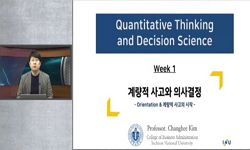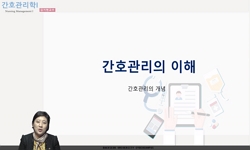Sociality is a core aspect of human life. As most of complex human behaviors and decisions are fundamentally rooted in the process of valuation, elucidating the neural mechanism of social valuation would be essential to understand the complex nature o...
http://chineseinput.net/에서 pinyin(병음)방식으로 중국어를 변환할 수 있습니다.
변환된 중국어를 복사하여 사용하시면 됩니다.
- 中文 을 입력하시려면 zhongwen을 입력하시고 space를누르시면됩니다.
- 北京 을 입력하시려면 beijing을 입력하시고 space를 누르시면 됩니다.
부가정보
다국어 초록 (Multilingual Abstract)
In Experiment 1, I investigated how social valuation is encoded in the brain in a situation where the impression of strangers are formed and updated based on interpersonal similarity, a phenomenon known as a similarity-liking effect. Through fMRI scanning while watching updating similarity information of others, I found that the activity of vACC increased when the symbols of similar compared to the dissimilar partners was presented. Also, the greater vACC activation was associated with the behavioral bias in trust game toward the similar compared to dissimilar others. In addition, a PPI analysis using the vACC as a seed region revealed greater functional connectivity with the right TPJ for the events of same compared to different choices by similar partners.
In Experiment 2, I examined how social valuation influences on economic decision-making in a context that elicits social comparison and whether and how cultural membership, particularly independent versus interdependent cultures, may differentially shape the neural processes underlying social comparison. I examined the behaviors and neural response patterns of Korean (i.e., interdependent culture) and American (i.e., independent culture) participants while performing a financial gambling task simultaneously and independently with a partner. Upon seeing the partner’s income, greater modulation of the activity in the ventral striatum (VS) and the ventromedial prefrontal cortex (vmPFC/vACC) by relative gain was observed in Korean than American participants, suggesting greater sensitivity of Koreans toward social comparison. The strength of functional connectivity between the VS and the vmPFC/vACC predicted individual variability in the degree to which participants’ decisions were affected by relative incomes. Additional model-based fMRI analysis further confirmed the primary role of the vmPFC/vACC in biasing decisions based on relative incomes.
Both studies reported in this thesis, when combined together, emphasizes the key role of vACC in computing social valuation and affecting decision-making, serving as a hub in the essential neurocircuitry engaged in a wide spectrum of social decision-making.
Sociality is a core aspect of human life. As most of complex human behaviors and decisions are fundamentally rooted in the process of valuation, elucidating the neural mechanism of social valuation would be essential to understand the complex nature of human social behaviors. The present thesis aimed to examine how our brain, more specifically, the ventral anterior cingulate cortex (vACC), computes social valuation and how this process affects our decisions under social contexts by utilizing functional magnetic imaging techniques.
In Experiment 1, I investigated how social valuation is encoded in the brain in a situation where the impression of strangers are formed and updated based on interpersonal similarity, a phenomenon known as a similarity-liking effect. Through fMRI scanning while watching updating similarity information of others, I found that the activity of vACC increased when the symbols of similar compared to the dissimilar partners was presented. Also, the greater vACC activation was associated with the behavioral bias in trust game toward the similar compared to dissimilar others. In addition, a PPI analysis using the vACC as a seed region revealed greater functional connectivity with the right TPJ for the events of same compared to different choices by similar partners.
In Experiment 2, I examined how social valuation influences on economic decision-making in a context that elicits social comparison and whether and how cultural membership, particularly independent versus interdependent cultures, may differentially shape the neural processes underlying social comparison. I examined the behaviors and neural response patterns of Korean (i.e., interdependent culture) and American (i.e., independent culture) participants while performing a financial gambling task simultaneously and independently with a partner. Upon seeing the partner’s income, greater modulation of the activity in the ventral striatum (VS) and the ventromedial prefrontal cortex (vmPFC/vACC) by relative gain was observed in Korean than American participants, suggesting greater sensitivity of Koreans toward social comparison. The strength of functional connectivity between the VS and the vmPFC/vACC predicted individual variability in the degree to which participants’ decisions were affected by relative incomes. Additional model-based fMRI analysis further confirmed the primary role of the vmPFC/vACC in biasing decisions based on relative incomes.
Both studies reported in this thesis, when combined together, emphasizes the key role of vACC in computing social valuation and affecting decision-making, serving as a hub in the essential neurocircuitry engaged in a wide spectrum of social decision-making.
국문 초록 (Abstract)
실험 1에서는 타인과의 유사성을 학습해가면서 상대방에 대한 인상을 형성하는 과정에서 타인에 대한 가치가 뇌에서 어떻게 처리가 되는지를 보고자 하였다. 타인의 유사성 정보를 학습하는 과정을 자기 공명 영상 장치 안에서 촬영하여, 유사한 타인의 상징을 볼 때, 유사하지 않은 타인의 상징을 볼 때보다 내측 전측 대상회피질 영역의 활동이 증가된다는 것을 밝혔다. 또한 그 차이가 유사한 타인과 유사하지 않은 타인에 대한 투자게임에서의 차이를 예측함을 확인하였다. 내측 전측 대상회 피질을 기준으로 유사한 타인의 나와 동일한 선택과 다른 선택을 내리는 것을 볼 때에 기능적 연결 분석한 결과, 우측 측두두정엽이 확인되었으며, 이 기능적 연결 또한 신뢰게임에서의 행동을 예측하였다.
실험 2에서는 사회비교가 일어나는 상황에서 사회 가치가 경제적인 의사결정에 어떻게 영향을 주는지 또한 상호의존적 혹은 상호독립적인 자기 개념을 가진 문화권에서의 사회비교 행동 차이가 뇌 수준에서 어떻게 반영이 되는지에 대해서는 확인하였다. 상호의존적 자기 개념을 가진 한국인과 상호독립적 자기 개념을 가진 것으로 알려진 미국인이 타인과 카드게임을 수행할 때에 행동과 신경학적 반응을 비교하여. 상대방의 결과를 함께 볼 때에, 복측 선조체와 복내측 전전두엽/내측 전측 대상회피질 영역이 상대적인 수입에 의해서 영향을 받는 정도가 한국인에서 더욱 큰 것을 확인하였다. 또한 복측 선조체와 복내측 전전두엽/내측 전측 대상회피질 영역의 기능적 연결 강도가 상대적인 수입에 의해 의사결정이 영향을 받는 정도의 개인차를 예측하였다. 추가적인 모델 기반 분석을 통하여 복내측 전전두엽/내측 전측 대상회피질이 상대적인 수입에 의해 영향을 받는 의사결정 편향에 기여한다는 것을 확인하였다.
두 연구를 통하여, 본 논문에서는 내측 전측 대상회피질이 사회적 가치를 계산하고, 다양한 사회적 의사결정 상황에서 중추적인 역할을 하고 있음을 확인하였으며, 이에 내재된 사회적 가치 계산 과정에 대한 이해가 일상적인 사회행동은 물론, 사회행동 및 정서 장애가 발생하는 기제에 대한 이론적인 체계를 제공할 것으로 기대한다.
사회성은 인간 생활을 영위하는데 필수적인 요소이며 인간의 복잡한 의사결정은 우리가 접하는 자극들에 대한 가치를 계산하는 것에 바탕을 두고 있으므로, 이를 이해하기 위해서는 인간의...
사회성은 인간 생활을 영위하는데 필수적인 요소이며 인간의 복잡한 의사결정은 우리가 접하는 자극들에 대한 가치를 계산하는 것에 바탕을 두고 있으므로, 이를 이해하기 위해서는 인간의 뇌에서 가치가 어떠한 방식으로 계산되어지는지를 이해하는 것이 매우 중요하다. 본 논문은 인간의 뇌, 그 중에서도 내측 전측 대상회피질에서 사회적 가치를 계산하는지, 이 과정이 사회적인 맥락 속에서 인간의 의사결정에 어떻게 영향을 미치는지에 대하여 자기 공명영상 장치를 이용하여 연구하였다.
실험 1에서는 타인과의 유사성을 학습해가면서 상대방에 대한 인상을 형성하는 과정에서 타인에 대한 가치가 뇌에서 어떻게 처리가 되는지를 보고자 하였다. 타인의 유사성 정보를 학습하는 과정을 자기 공명 영상 장치 안에서 촬영하여, 유사한 타인의 상징을 볼 때, 유사하지 않은 타인의 상징을 볼 때보다 내측 전측 대상회피질 영역의 활동이 증가된다는 것을 밝혔다. 또한 그 차이가 유사한 타인과 유사하지 않은 타인에 대한 투자게임에서의 차이를 예측함을 확인하였다. 내측 전측 대상회 피질을 기준으로 유사한 타인의 나와 동일한 선택과 다른 선택을 내리는 것을 볼 때에 기능적 연결 분석한 결과, 우측 측두두정엽이 확인되었으며, 이 기능적 연결 또한 신뢰게임에서의 행동을 예측하였다.
실험 2에서는 사회비교가 일어나는 상황에서 사회 가치가 경제적인 의사결정에 어떻게 영향을 주는지 또한 상호의존적 혹은 상호독립적인 자기 개념을 가진 문화권에서의 사회비교 행동 차이가 뇌 수준에서 어떻게 반영이 되는지에 대해서는 확인하였다. 상호의존적 자기 개념을 가진 한국인과 상호독립적 자기 개념을 가진 것으로 알려진 미국인이 타인과 카드게임을 수행할 때에 행동과 신경학적 반응을 비교하여. 상대방의 결과를 함께 볼 때에, 복측 선조체와 복내측 전전두엽/내측 전측 대상회피질 영역이 상대적인 수입에 의해서 영향을 받는 정도가 한국인에서 더욱 큰 것을 확인하였다. 또한 복측 선조체와 복내측 전전두엽/내측 전측 대상회피질 영역의 기능적 연결 강도가 상대적인 수입에 의해 의사결정이 영향을 받는 정도의 개인차를 예측하였다. 추가적인 모델 기반 분석을 통하여 복내측 전전두엽/내측 전측 대상회피질이 상대적인 수입에 의해 영향을 받는 의사결정 편향에 기여한다는 것을 확인하였다.
두 연구를 통하여, 본 논문에서는 내측 전측 대상회피질이 사회적 가치를 계산하고, 다양한 사회적 의사결정 상황에서 중추적인 역할을 하고 있음을 확인하였으며, 이에 내재된 사회적 가치 계산 과정에 대한 이해가 일상적인 사회행동은 물론, 사회행동 및 정서 장애가 발생하는 기제에 대한 이론적인 체계를 제공할 것으로 기대한다.
목차 (Table of Contents)
- THE CONTENTS OF THESIS
- General Introduction......................................................................................1
- 1.1 Human social behaviors and brain .......................................................................1
- 1.2 Anatomy of ventral anterior cingulate ..................................................................4
- 1.2.1. Anatomy of ventral anterior cingulate ........................................................4
- THE CONTENTS OF THESIS
- General Introduction......................................................................................1
- 1.1 Human social behaviors and brain .......................................................................1
- 1.2 Anatomy of ventral anterior cingulate ..................................................................4
- 1.2.1. Anatomy of ventral anterior cingulate ........................................................4
- 1.2.2. The ambiguity of anatomical distinction of ventral ACC and other brain regions ………………………………………………………………...…. 6
- 1.3 Role of vACC in social behavior of Animals ......................................................8
- 1.4 Role of human ACC in affective valuation and decision making……...............10
- 1.4.1. Role of vACC in person evaluation .........................................................10
- 1.4.2. vACC and sadness ....................................................................................12
- 1.4.3. Clinical Implications of vACC function...................................................12
- 1.4.4. Evidence from structural neuroimaging studies on the role of vACC in social behaviors……………………………………………………….....14
- 1.4.5. Summary of human studies……………………………………………...14
- 1.5 Concluding remark..............................................................................................15
- Ventral ACC Activity Tracking Evidence of Interpersonal Similarity Facilitates Trusting Behavior
- 2.1. Introduction .......................................................................................................17
- 2.2. Methods and Materials.......................................................................................20
- 2.2.1. Participants………....................................................................................20
- 2.2.2. Preference learning task............................................................................21
- 2.2.3. Trust game................................................................................................23
- 2.2.4. Post questionnaire.....................................................................................24
- 2.2.5. Procedure..................................................................................................24
- 2.2.6. fMRI data acquisition...............................................................................24
- 2.2.7. fMRI data analysis....................................................................................25
- 2.3. Results................................................................................................................26
- 2.3.1. Behavioral results......................................................................................26
- 2.3.2. fMRI result................................................................................................28
- 2.3.2.1. Neural responses to similar versus dissimilar partner....................28
- 2.3.2.2. Neural responses during observation of other’ choices.................29
- 2.3.2.3. Neural substrates interacting with vACC.......................................32
- 2.4. Discussion..........................................................................................................36
- Neural Evidence for Individual and Cultural Variability in the Social Comparison Effect
- 3.1. Introduction .......................................................................................................40
- 3.2. Materials and Methods ......................................................................................44
- 3.2.1. Participants ...............................................................................................44
- 3.2.2. Task ..........................................................................................................44
- 3.2.3. fMRI data acquisition ...............................................................................47
- 3.2.4. fMRI data analysis ...................................................................................48
- 3.2.5. Determining statistical significance .........................................................50
- 3.3. Results ...............................................................................................................52
- 3.3.1. Behavioral results .....................................................................................52
- 3.3.2. Neuroimaging results ...............................................................................54
- 3.3.2.1. Region of interest analysis ............................................................54
- 3.3.2.2. Voxelwise whole-brain analysis ....................................................55
- 3.3.2.3. PPI analysis ...................................................................................57
- 3.3.2.4. Neural signals for decision bias due to social comparison .....................................................................................60
- 3.4. Discussion .........................................................................................................67
- General Discussion
- 4.1. Summary ……….............................................................................................................73
- 4.2. Future Direction ................................................................................................75
- 4.34 Conclusion ..........................................................................................................747
- Bibliography













